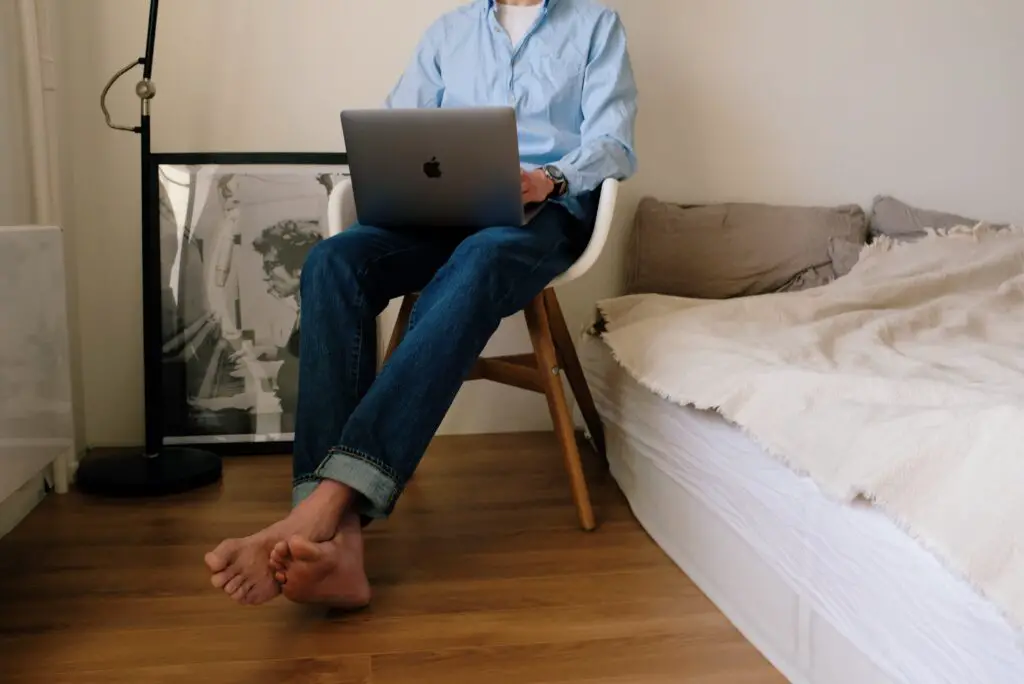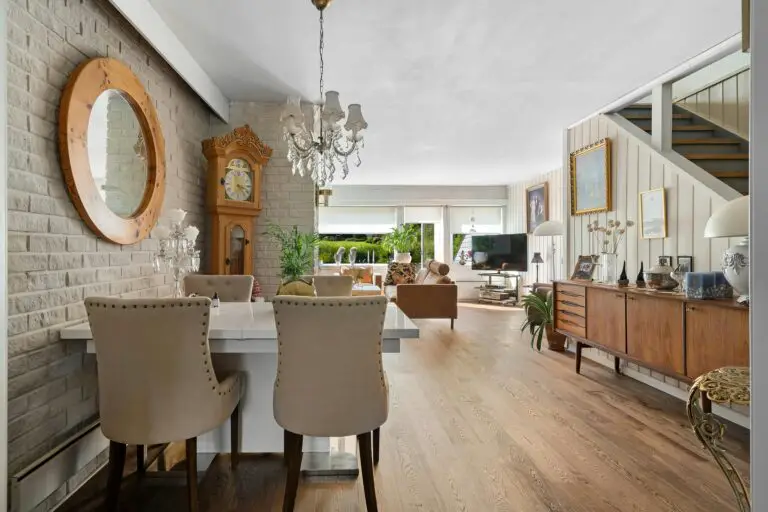In today’s digital age, working from home has become more common and transforming a bedroom into a home office is a practical and efficient solution. You can create a comfortable and productive workspace by repurposing an existing room without compromising style or functionality.
From assessing the available space to selecting furniture and incorporating design elements, we’ll provide valuable tips and ideas to help you create a personalized and inspiring work environment.
So, if you’re ready to revamp your bedroom and unleash its full potential as a home office, let’s dive right in!
Assessing the Bedroom Space

Before transforming your bedroom into a home office, it’s essential to assess the available space and consider any potential limitations or challenges. By understanding the dimensions and layout of the room, you can plan accordingly and make the most of what you have.
Start by measuring the room’s dimensions, taking note of any architectural features such as windows, doors, or built-in closets. This information will be crucial when selecting furniture and designing the layout of your home office. Additionally, consider the existing furniture and decor in the room. Determine what can be repurposed or moved to accommodate your new workspace.
Planning and Designing the Home Office

Once you have a clear understanding of the space, it’s time to plan and design your home office. Begin by determining the office layout and workflow that suits your needs. Consider factors such as proximity to power outlets, access to natural light, and privacy requirements.
Next, select a color scheme and style that aligns with your preferences and work style. Opt for calming and neutral tones to create a serene atmosphere conducive to focus and productivity. If you prefer a vibrant and energizing space, don’t be afraid to incorporate bold accents and patterns.
Ergonomics should also be a priority when designing your home office. Invest in a comfortable and supportive desk chair that promotes good posture and reduces the risk of back pain. Consider an adjustable desk that allows you to switch between sitting and standing positions, promoting movement and reducing the negative effects of prolonged sitting.
Lighting is another crucial aspect of a home office. Maximize natural light by positioning your desk near a window. Supplement it with task lighting, such as a desk lamp, to ensure proper illumination for focused work. Remember to choose adjustable lighting options to accommodate different tasks and moods.
Furniture and Equipment Selection

Careful selection of furniture and equipment is vital for an efficient and organized home office. Start with a suitable desk that offers ample workspace and storage options. Consider the dimensions of the room and your workflow requirements when choosing the desk size and shape.
Pair your desk with a comfortable and ergonomic chair that supports proper posture and provides sufficient back and neck support. Don’t compromise on quality and comfort, as you’ll be spending several hours in this chair every day.
To maximize storage space, incorporate shelves, cabinets, or organizers into your home office. Utilize vertical space by installing wall-mounted shelves or bookcases. Choose storage solutions that blend seamlessly with the overall design and keep your workspace clutter-free.
Technology and Connectivity

In today’s digital era, technology is crucial in any home office. Ensure you have reliable internet connectivity by setting up a robust Wi-Fi network or using a wired connection if necessary. Consider investing in a Wi-Fi range extender to eliminate dead zones and ensure a stable connection throughout the room.
Plan the placement of electrical outlets and extensions to accommodate your computer, printer, scanner, and other devices. Conceal cords and cables using cable management solutions or by routing them behind furniture.
When selecting technology equipment, prioritize quality and functionality. Choose a computer that meets your specific needs, whether it’s a laptop, desktop, or all-in-one device. Opt for a printer and scanner combination to save space and streamline your workflow.
Creating a Distraction-Free Environment

One of the challenges of working from home is managing distractions. To create a productive environment, take steps to minimize noise disruptions and establish privacy.
If noise is an issue, consider soundproofing the room with acoustic panels or insulation. Alternatively, use white noise machines or headphones to drown out external sounds. Visual barriers, such as room dividers or curtains, can also help create a dedicated work zone and reduce distractions.
Setting boundaries is crucial when transforming a bedroom into a home office. Communicate your working hours to family members or housemates and establish guidelines to minimize interruptions. By creating a clear separation between your workspace and the rest of the room, you can maintain focus and productivity.
Organizational Systems and Productivity Tools
Efficient storage and organization systems are essential for maintaining a clutter-free home office. Use labeled storage bins or file cabinets to organize documents, office supplies, and equipment. Desk organizers and trays can keep your immediate workspace tidy and within easy reach.
Incorporate a calendar or planner to schedule tasks and deadlines, effectively managing time. Explore digital tools and productivity apps that can enhance your workflow and help you stay organized.
Personalizing the Home Office Space

While it’s important to maintain a professional and functional workspace, don’t forget to infuse your personality into the design. Personal touches can boost motivation and create a sense of ownership over your home office.
Add artwork, motivational quotes, or a vision board that inspires you. Incorporate plants or natural elements to create a calming and refreshing atmosphere. Display personal items or sentimental objects that bring you joy and reflect your interests.
Lighting and Ambiance
Proper lighting and ambiance can significantly impact your mood and productivity. Invest in task lighting that illuminates your work surface adequately. Consider adjustable lighting options that allow you to control the intensity and color temperature to match your tasks and preferences.
Additionally, create a cozy ambiance by incorporating ambient lighting. Use floor or table lamps to create warm and inviting lighting for a more relaxed atmosphere. Harness natural elements like sunlight and plants to infuse the space with fresh and invigorating energy.
Ensuring Comfort and Health

Working long hours at a desk can take a toll on your well-being. Prioritize your comfort and health by selecting ergonomic furniture and incorporating healthy habits into your work routine.
Choose a supportive chair with adjustable features to reduce the risk of developing back or neck pain. Consider using a standing or adjustable desk to alternate between sitting and standing positions, promoting better posture and blood circulation.
Ensure proper ventilation and air circulation in your home office. Open windows regularly to let fresh air in, or use an air purifier to maintain clean and healthy indoor air quality.
Finally, remember to take regular breaks and incorporate movement into your workday. Stretch, walk, or engage in light exercises to prevent stiffness and promote overall well-being.
Final Touches and Finishing Details
As you near the completion of your bedroom-to-home-office transformation, pay attention to the final touches and finishing details. Ensure the space is clean and free of clutter, providing a fresh start for your work journey.
Organize cables and cords using cable clips, sleeves, or cord covers to create a clean and professional appearance. Test the functionality of all equipment and technology, ensuring they are properly connected and functioning as expected.
Add final touches like curtains, rugs, and decorative accents that complement the overall design and enhance the comfort of your home office. Aesthetically pleasing details can contribute to a pleasant and inviting workspace.
Conclusion
Transforming a bedroom into a home office offers a convenient and productive solution for those who work remotely or require a dedicated space for personal projects. By carefully assessing the space, planning the layout, and selecting suitable furniture and equipment, you can create a functional and inspiring workspace that meets your needs.
Remember to prioritize ergonomics, organization, and personalization when designing your home office. Pay attention to lighting, ambiance, and comfort to create an environment that promotes productivity and well-being.
Frequently Asked Questions (FAQs)
1. How can you transform a bedroom into a home office on a budget?
Transforming your bedroom into a home office doesn’t have to break the bank. Start by repurposing existing furniture and decor to save costs. Look for affordable second-hand or discounted furniture options. DIY storage solutions and creative organizational hacks can also help you stay within your budget.
2. What are some creative storage ideas for a small home office?
In a small home office, maximizing storage space is crucial. Consider using wall-mounted shelves, floating desks, or vertical filing systems to make the most of your available space. Utilize under-desk storage options such as rolling drawers or cubbies. Explore multifunctional furniture that combines storage and workspace, such as desks with built-in shelves or file cabinets.
3. How can you make a home office more comfortable and inviting?
To make your home office comfortable and inviting, focus on ergonomic furniture and lighting. Invest in a supportive chair and consider using a standing or adjustable desk. Incorporate cozy elements such as cushions, rugs, and curtains. Personalize the space with artwork, plants, and personal items that reflect your style and interests.
4. How can you minimize distractions in a home office?
Minimizing distractions is essential for maintaining focus and productivity. Use soundproofing techniques, such as acoustic panels or white noise machines, to reduce noise disruptions. Establish clear boundaries with family members or housemates, communicating your working hours and expectations. Create visual barriers or privacy solutions, such as room dividers or curtains, to minimize distractions and maintain a dedicated work zone.
5. How can you maintain an organized home office?
The organization is key to an efficient home office. Implement effective storage solutions, such as shelves, cabinets, or organizers, to keep your workspace tidy. Utilize desk organizers and trays to keep essential items within reach. Label storage bins or file cabinets to maintain a systematic filing system. Regularly declutter and purge unnecessary items to prevent accumulation and maintain a clutter-free environment.



